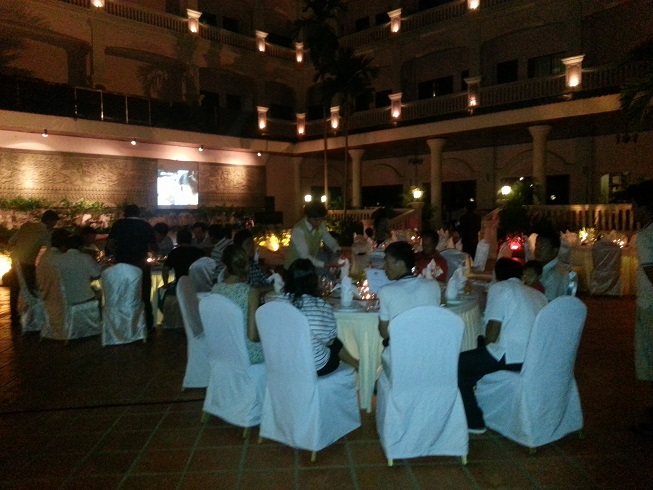Conference and Retreat in Siem Reap
On June 6, all twelve IBJ lawyers and their families gathered in Phnom Penh for a one-day training session. Each lawyer has a staff of two, an office manager and an investigator, who also came with their families. Two veteren public defenders from Orange County had volunteered to fly in and lead the discussion. I sat in on the afternoon session and watched as the American lawyers and their Cambodian counterparts traded tips, compared experiences, and shared the joys and frustrations of their work. The two women proposed a hypothetical case in the morning and, in the afternoon, the group broke into teams to strategize possible defenses under Cambodian law
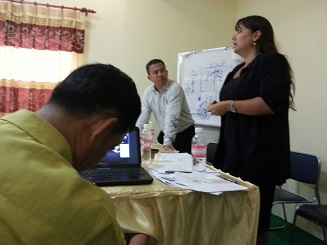
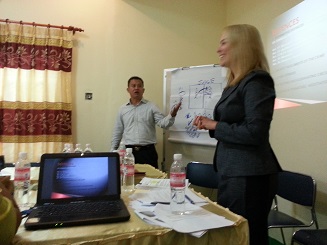

We were all up early the next morning for a staff meeting in the IBJ office, then off on a tour bus to Siem Reap for a company retreat (well-deserved by everyone exept the intern who had only been in Phnom Penh less than a month, but he was happy to tag along). The bus left at 11 AM and arrived in Siem Reap around 8 PM. We ate at a DIY barbeque restaurant then headed to the three-star Ree Hotel, not too ritzy for a non-profit NGO, but a major upgrade from the budget guesthouse where we stayed in Mondulkiri.
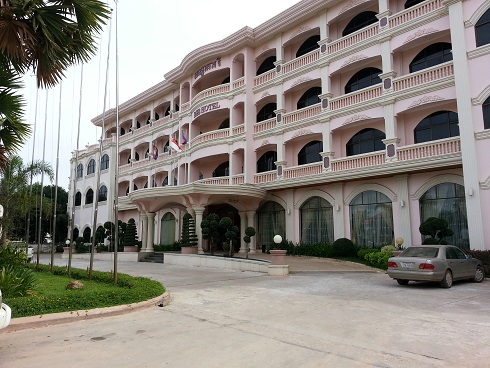
At 8 AM the next morning, the enitre staff gathered in a large conference room for a four-hour group discussion. The lawyers, office administrators, and investigators, broke into separate groups and discussed their unique successes and challenges. Just before lunch, a spokesperson from each group presented a summary of the discussions. The two most common difficulties were the long travels across treacherous roads to provide services to clients in remote villages and the corruption among the four groups of "justice stakeholders": police officials, prison officials, prosecutors, and judges. The ones among the group who had built strong relationships with one or another of these stakeholders offered their advice. The one success mentioned by all was seeing the growth of legal awareness in the villages across their districts.
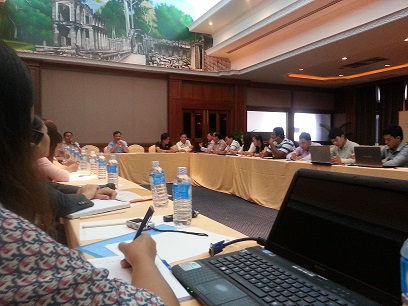

After lunch, the bus took us twenty minutes north to the Ankor temple complex. From 802 to 1432 A.D. the Khmer empire saw its rise and fall as one of the great southeast-Asian powers. Jayavarman II (802-50) was the first to unify Cambodia and proclaim himself a "devaraja": god-king and earthly representative of the Hindu god Shiva. His commissioning a temple to Shiva atop Phnom Kulen mountain inaugurated a trend of architectural advancement, as each successive king tried to one-up his predecessor's display of piety and power by building a more impressive temple. The trend peaked with the construction of Ankor Wat by Suryavarman II (1112-52), a devotee of the Hindu god Vishnu. Then, in 1177, the Chams of southern Vietnam sacked Angkor and the next king, Jayavarman VII, built an entirely new city, Angkor Thom. He also adoped Mahayana Buddhism, seeking divine patronage from Avalokiteshvara, the Bodhissatva of compassion. The power of the Khmer in Angkor pittered out when the Thais managed to sack the region twice, in 1351 and 1431. Angkor was "discovered" in the West after the French explorer, Henri Mouhot, published Voyage a Siam et dans le Cambodge in 1868. Although the hundreds of temples in Angkor had long since fallen into disuse and been abandoned to the elements, Khmer Royalty had preserved Suryavarman's crown jewel, Angkor Wat temple, as a Buddhist shrine since the 16th century. Since 1992, Angkor Wat has beeen a World Heritage Site under the jurisdiction of the UN Educational Scientific and Cultural Organization. Having survived the tumultuous regime changes of the last forty years, the site was removed from Unesco's endangered list in 2003.
Some travelers spend days trekking around the Angkor complex, but we only had the afternoon and limited ourselves to Angkor Wat, Bayon temple in Angkor Thom, and Phnom Krom. Angkor Wat, considered the emblem of Cambodia, is surrounded by an impressive moat and seeing the glistening reflection of the afternoon sun on the water compensated for the oppressive afternoon heat. 300,000 laborers and 6,000 elephants, built the three-level temple, which rises fifty-five meters above the ground, up a steep, thirty-one-meter staircase from the second level. 800 meters of intricate bas-releifs snake around the first level, depicting battles scenes from the Mahabharata, a Hindu epic, as well as the real-life exploits of Suryavarman II. After seeing Angkor Wat, we took a tuk-tuk fifteen minutes up the road to Angkor Thom and saw Bayon temple. We finished the day by hiking up to a temple on top of Phnom Krom. The peak afforded an overwhelming view of the entire complex and in the distance we could make out Phnom Kulen mountain, our destination for the next day.
v
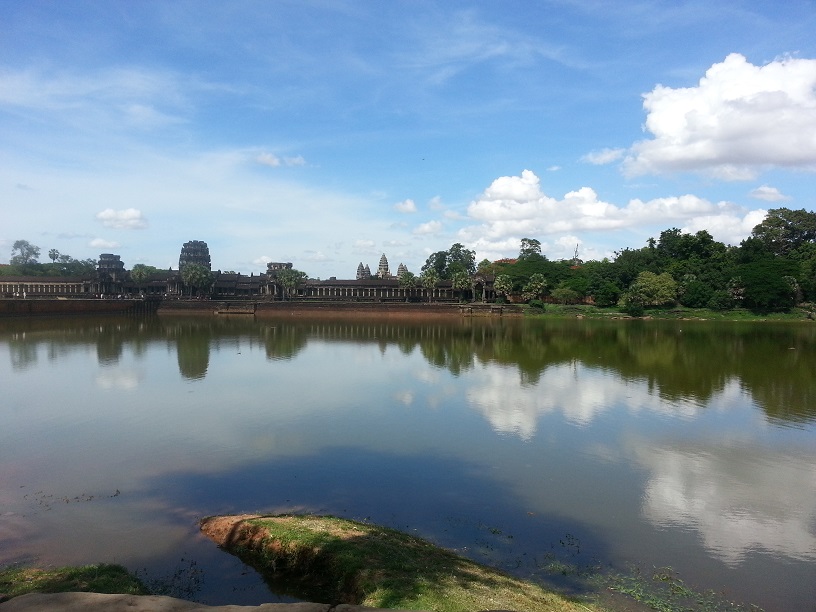
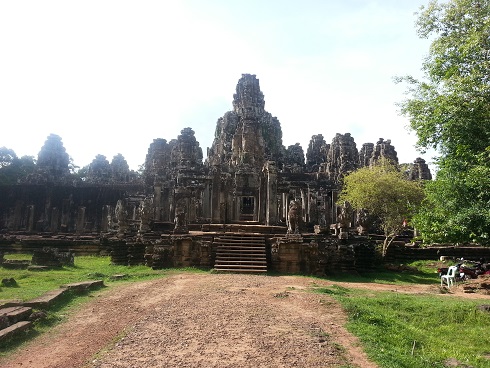
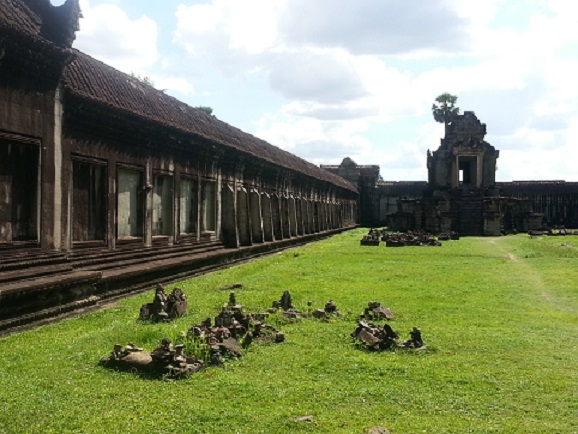
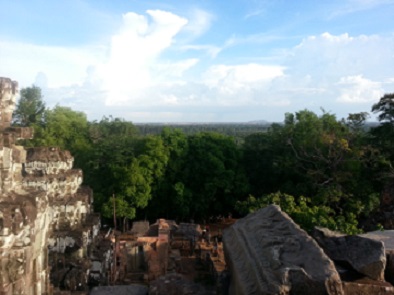
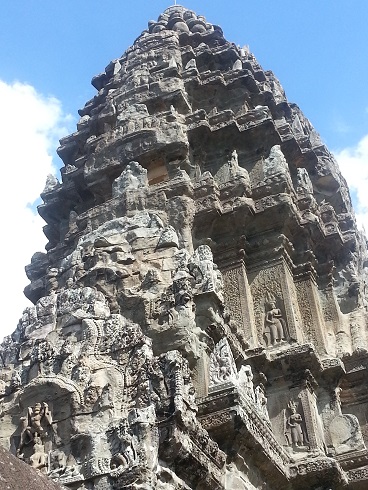
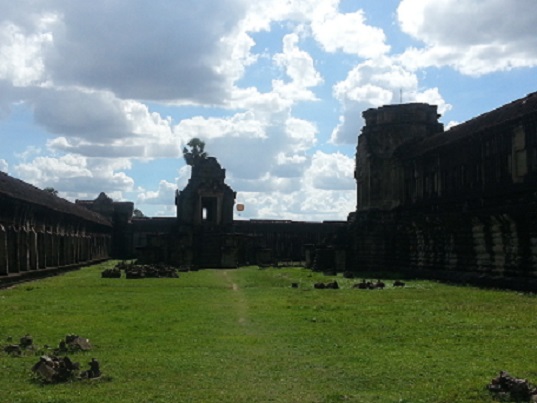
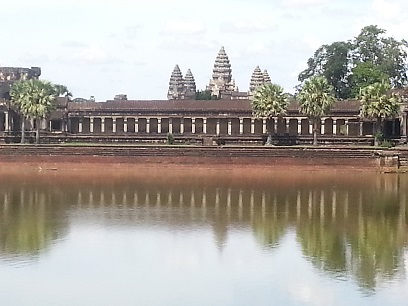
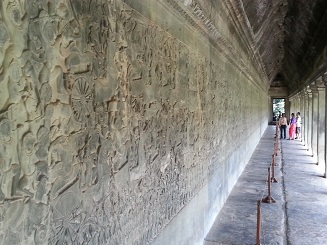
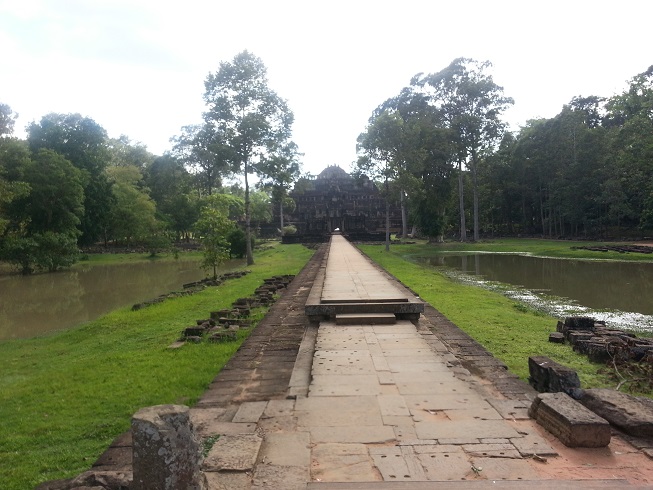
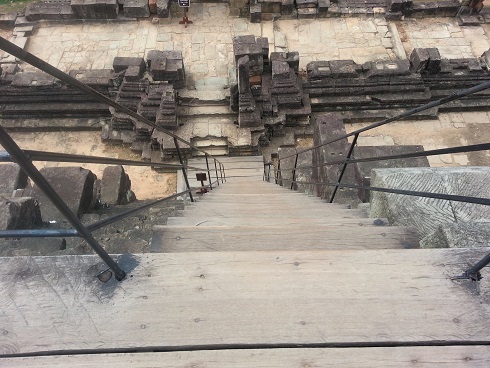
We left for Phnom Kulen early the next morning. It was here that Jayavarman II proclaimed himself god-king and declared independence from Java in 802 A.D. The small temple at the summit, Wat Preah Ang Thom, is a holy site for Cambodian Buddhists and the vast majority of the staff bought flowers at the base of the mountain to trade for blessings from the monks in the temple at the top. For lunch, we walked a half-mile downhill through the forest to a relatively crowded picnic ground and waterfall. We rented two gazebos and ate sitting cross-legged on floor mats. After lunch, a few of us travelled down to the base of the waterfall. I did not swim, but I did swing over the water in a very comfortable wicker chair tied with two ropes to the overhanging tree boughs.
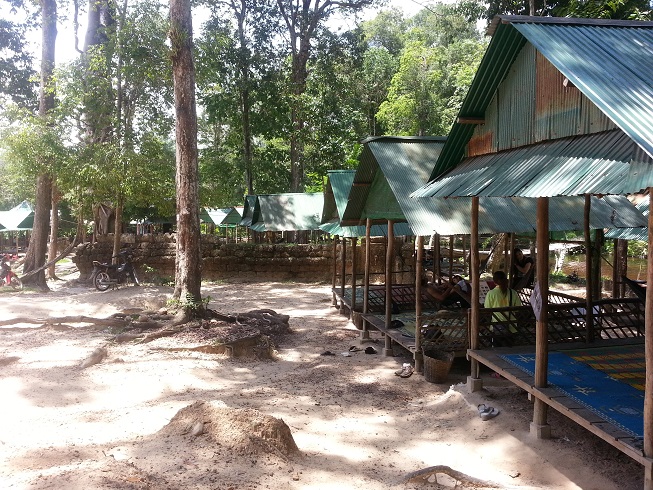
That night we all gathered in the courtyard of the hotel for a formal dinner. Many of the IBJ staff have young children around the same age and watching them play together, somehow managing not to overturn the meticulously-set dinner tables, was very amusing. After eating and dancing Khmer-style (a lot of arm-waving), we headed to bed. The next morning, after breakfast, everyone filed onto two separate busses to return to their respective DRcs. The four of us from the Phnom Penh office stopped at the DRC in Kampong Thom, halfway back to the capital, for three days of monitoring, evaluation, and interviews.
